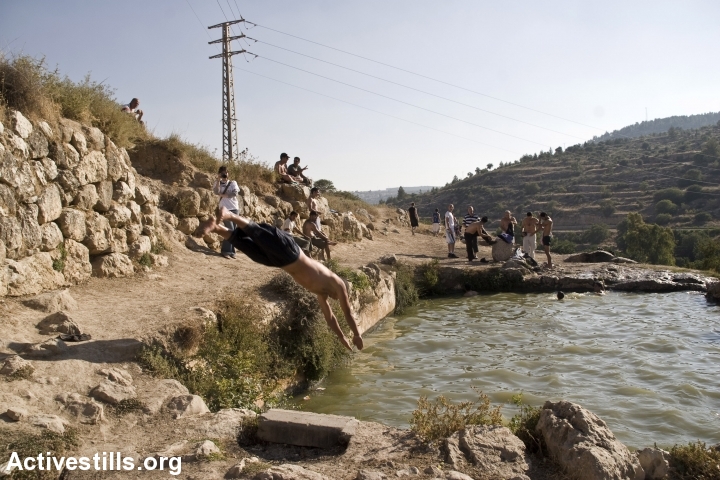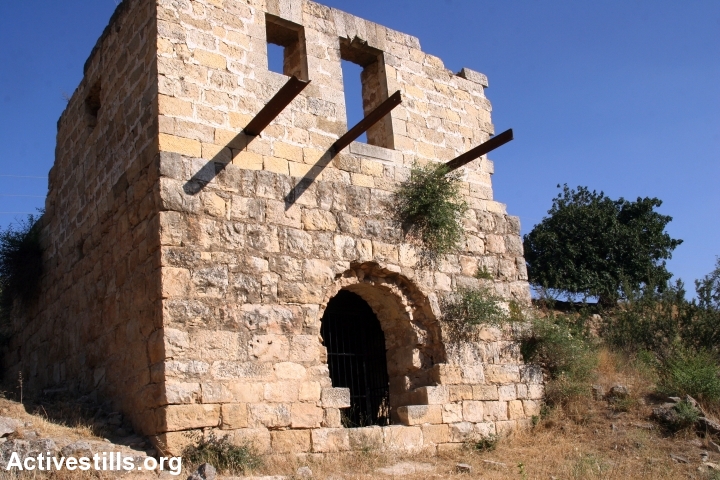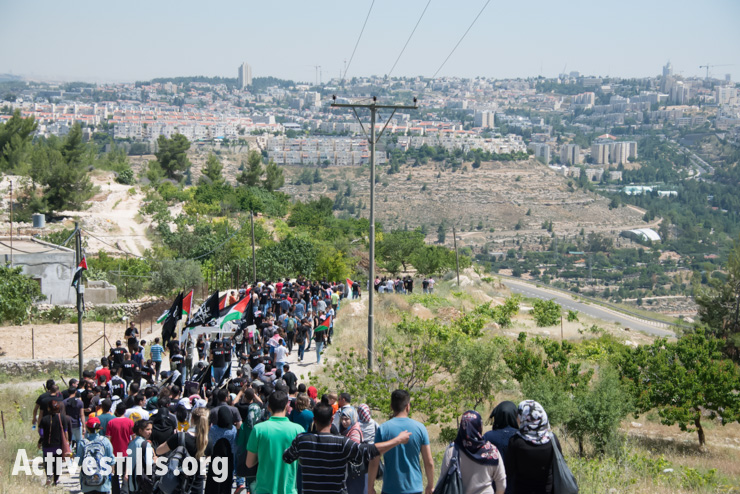For decades, Jews and Palestinians alike would wander through the abandoned village of al-Walaja, encountering ghosts of the past, and facing the intimacy of a stranger’s home.
By Natasha Dudinski

A spring walk in Nahal Refaim. Blue sky, cheerful sun, red anemones, white almond trees, and the rocky green Jerusalem hills. It is the most beautiful part of the year, filled with hopes for something new; groups of weekend hikers dot the valley’s trails. I follow my own unbeaten path, zigzagging between the present and the past.
The three stone houses along the road are there regardless of the season. They were once an organic part of the landscape, built by people who lived here for centuries planting trees, growing vegetables, raising goats and sheep, and maintaining an ancient irrigation system based on local springs and agricultural terraces. They probably did many other things which I know nothing about.
By the time I saw these houses for the first time many years ago, their inhabitants were long gone. The overgrown wild vegetation surrounding them still held their memories. I did not yet understand the language of these memories, but I could feel them. The air was thick with them. There were no bars over the windows yet, allowing any curious passerby to enter. One could touch the inner walls and hear the voices and whispers, laughs and cries left behind in the nooks and crannies of the old house. I wanted to know to whom they belonged, why did they leave, where did they go, and would they ever come back?

Later my friend Sheerin told me her and her family’s stories about her village of al-Walaja and about the springs of Ein el Hanniya, Ein Balad and Ein Lavan. I have kept coming back to this valley ever since — it was love at first sight, which hasn’t disappeared over the past 20 years. I now have my own memories of the place, too.
A few years ago, the concrete separation wall began to snake its way through the valley, cutting al-Walaja off from most of its lands, including water springs and ancient agricultural terraces. And then, someone in Israel’s corridors of power came up with a brilliant idea: to turn all this breath-taking beauty into a national park.
First came the fence. Then the ancient nymphaeum at Ein al-Hanniya was cleaned of graffiti and other patina. A centuries-old irrigation system was excavated and its inner workings exposed. Now that those who cultivate the terraces and tend to their sheep have been fenced out, the park’s visitors will soon be able to bathe peacefully in two sparkling pools. Actually, people used to bathe in one of the pools before the clean-up. Unarmed Palestinians and Israelis, as well as armed settlers and soldiers, used to show off their bravery by jumping into the pool from a hill, while sheep, donkeys, horses, and dogs would quench their thirst from a basin at the bottom of the nymphaeum. Families and youths with guitars would have picnics and smoke nargileh next to each other in the wild open spaces. For years, the place was teeming with life, unplanned and unmediated. All languages and dress codes were welcome.

Now most of the greenery is gone, too. Asphalt and parking lots are being paved, new staircases are bring built, marked paths are being designated. Trees stand isolated in the barren landscape, and each of the stone houses has been surrounded by a fence. Soon signs will go up, telling the story of the place. Everything will be clean and clear. Organic connections between different parts of the landscape, created by humans and nature over centuries, are being cut or rearranged according to the official plans and one authoritative narrative.
These stone houses were once an organic part of the landscape. They remained so even after their inhabitants were long gone. Like a memory which lingers on, refusing to let go. The wild vegetation marked the time since it had last been cultivated. The houses were open to anyone who was not afraid to enter, to face the intimacy of a stranger’s home and touch the human warmth accumulated in the depth of their thick stones. Now they are surrounded by fences, with signs warning of danger. Perhaps to protect us from the weight of the memories crumbling upon us.
The landscape was first assaulted by the wall, and is now being fenced in, sterilized, and tamed. No more wandering around and wondering aloud, no more intimate encounters with the ghosts of the past, no more unexpected discoveries, no more flights of imagination, no more questions, no more spontaneous sharing of space, no more sense of freedom and adventure. That’s how you control both the past and the present, and through them the future, too.
These stone houses were like a memory that lingers on refusing to let go. A painful memory, like a wound, but a wound you could touch. Now they are being turned into a ride in an amusement park. One of many national parks created to anesthetize our memory of this place.
Natasha Dudinski is a filmmaker living in Jerusalem. She worked for many years as a reporter for the BBC broadcast in Czech, Czech Radio and Radio Free Europe.

